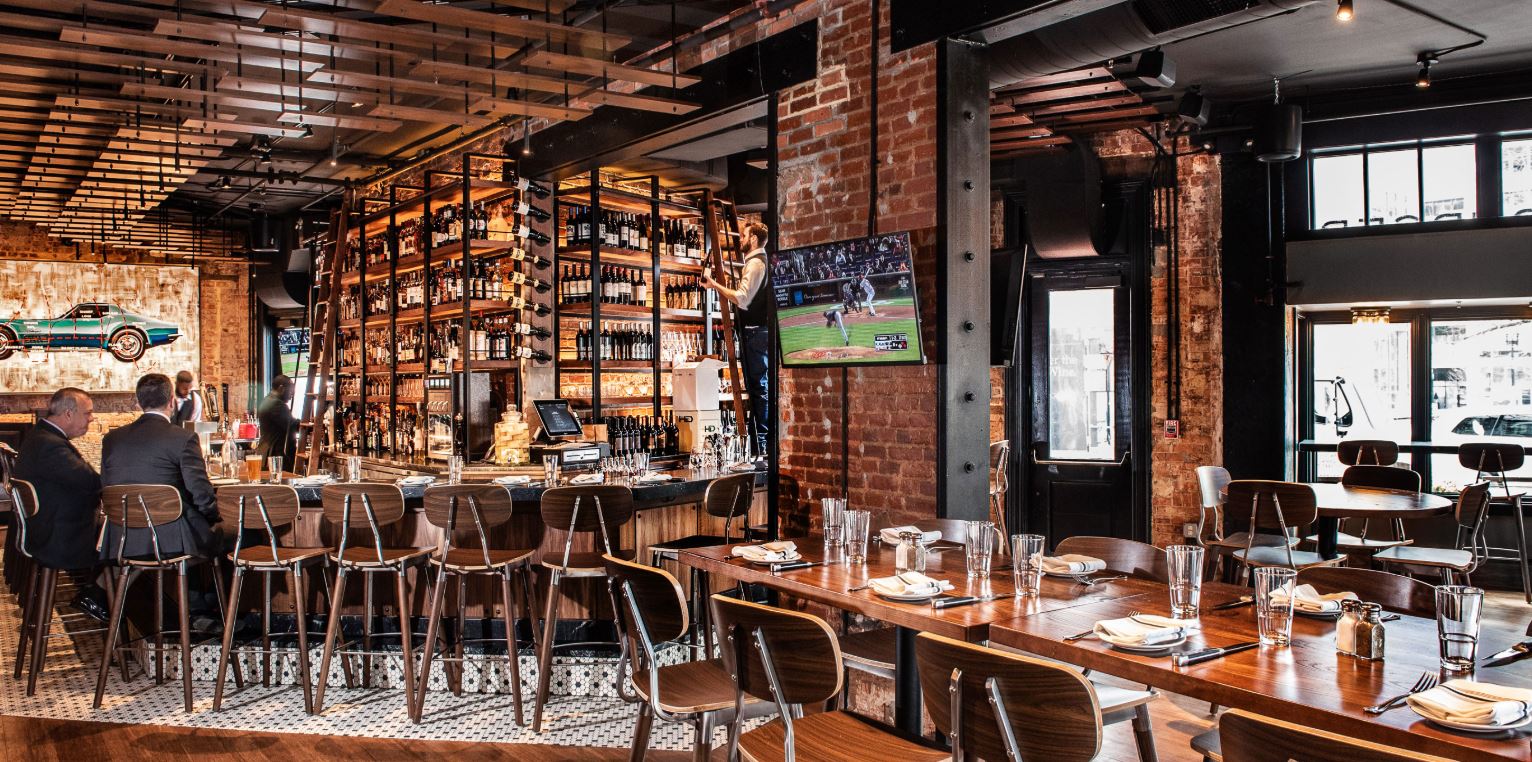Chinese Food Islamabad: Appreciate Genuine Chinese Food at its Best
Chinese Food Islamabad: Appreciate Genuine Chinese Food at its Best
Blog Article
Savor Genuine Oriental Cuisine With a Pan-Asian Twist for a Cooking Experience
Beginning on a culinary journey with genuine Oriental cuisine, improved with a Pan-Asian twist, provides a special possibility to discover the abundant tapestry of flavors that define the area's varied culinary traditions. This experience invites you to appreciate the beautiful equilibrium of preferences-- wonderful, salty, spicy, and sour-- balanced by fragrant herbs and seasonings. Imagine the cutting-edge combination of Thai curry and ramen or the unforeseen pleasure of sushi burritos. As you ponder these tempting recipes, consider the cultural stories and historic influences that shape them, each bite providing a story waiting to be found.

Exploring Pan-Asian Tastes
In the realm of global gastronomy, Pan-Asian cuisine stands out for its remarkable diversity and the harmonious interaction of flavors from various Oriental cultures. This culinary method commemorates the unique components and abundant customs located across the continent, developing a tapestry of preferences that is both enjoyable and appealing. Key to Pan-Asian cuisine is its capability to balance contrasting tastes-- wonderful, salty, spicy, and sour-- while highlighting the freshness and high quality of each active ingredient.
From the umami-rich soy sauce of Japan to the intense chili peppers of Thailand, Pan-Asian cuisine provides a substantial palette of flavors. These elements are commonly incorporated in innovative methods, boosting meals with layers of complexity. For example, using fragrant herbs such as lemongrass and cilantro, usual in Vietnamese and Thai food, adds a refreshing illumination to dishes, while the incorporation of coconut milk supplies a creamy, rich appearance.
The focus on fresh fruit and vegetables and fragrant seasonings ensures that each meal is not only a feast for the taste yet additionally for the detects. Pan-Asian food welcomes diners to start a culinary journey, discovering the huge and varied landscapes of Asian gastronomy with every bite.
Blend Dishes to Try
While Pan-Asian cuisine is commemorated for its standard tastes, the modern-day culinary landscape is significantly welcoming fusion recipes that mix these timeless components with impacts from various other areas. This innovative approach not only honors the rich heritage of Eastern culinary arts however also introduces unique taste experiences that attract contemporary tastes.
A prime instance of such a blend dish is the Korean-Mexican taco, where seasoned bulgogi beef is wrapped in a warm tortilla, topped with kimchi and a zesty gochujang-infused salsa. This mix marries the strong, full-flavored flavors of Korea with the vibrant, fresh aspects of Mexican food. Similarly, sushi burritos have acquired popularity, amalgamating the delicate virtuosity of Japanese sushi with the passionate, hand-held ease of a burrito, often including combination active ingredients like tempura shrimp and avocado with a drizzle of wasabi mayo.
An additional significant dish is Thai curry ramen, which infuses the creamy, aromatic spices of Thai curry into the calming brew of standard Japanese ramen, creating an unified blend that tantalizes the detects. These blend recipes prolong past plain uniqueness; they represent a culinary discussion between societies, urging expedition and technology worldwide of Pan-Asian cuisine.
Necessary Active Ingredients and Flavors
To truly appreciate Pan-Asian cuisine, one must understand the essential components and seasonings that form its structure. This diverse culinary design attracts from an abundant tapestry of Asian customs, employing an unified blend of tastes and structures.
Aromatic components are essential, with lemongrass, garlic, and ginger being common across different Pan-Asian dishes. These ingredients supply an aromatic base that boosts the complexity of tastes. Seasonings such as celebrity anise, cardamom, and cinnamon present warmth and personality, echoing influences from areas like China and India.

Cooking Techniques and Tips
Mastering the art of Pan-Asian cuisine requires experience with its unique cooking strategies, each adding to the dynamic tapestry of flavors this culinary tradition is celebrated for. Central to these approaches is the stir-fry, a fast food preparation method that protects the dietary honesty and vivid colors of ingredients. Utilizing a wok, the stir-fry method permits even warmth circulation, vital for attaining the particular structure and flavor balance of Pan-Asian recipes.
Another essential method is steaming, specifically widespread in Chinese food. This mild method keeps the natural flavors and nutrients of ingredients, making it perfect for seafood and veggies. Dumplings, a precious staple, commonly take advantage of steaming, resulting in soft, succulent textures.
Barbecuing, likewise integral, presents great smoky midsts to dishes such as Oriental bulgogi or Japanese yakitori (asian restaurant isb). This strategy commonly includes marinating components, allowing tastes to penetrate deeply prior to cooking over an open fire or hot plate
Last but not least, grasping the art of balancing tastes-- sweet, sour, salty, bitter, and umami-- is essential. Correctly layering these elements can raise a recipe from average to amazing, providing a facility and pleasing cooking experience that symbolizes the essence of Pan-Asian food.
Eating Experiences Worldwide
Around the world, Pan-Asian cuisine provides an unrivaled eating experience, commemorated for its rich tapestry of flavors and dynamic discussions. This culinary phenomenon has actually gone beyond social boundaries, catching the hearts and tastes of food enthusiasts worldwide. In cosmopolitan cities fresh York, London, and Sydney, Pan-Asian restaurants serve as fusions where cooking practices from Thailand, Japan, China, and beyond merge, providing diners with an eclectic mix of meals that highlight the region's variety.
The worldwide charm of Pan-Asian cuisine depends on its ability to provide both authenticity and development. Cooks skillfully wed typical active ingredients such as lemongrass, soy sauce, and miso with modern methods, resulting in dishes that are both refreshingly brand-new and familiar. This blend allows restaurants to start a culinary journey that values heritage while embracing modernity.
Moreover, eating experiences are raised through attentively developed atmospheres that reflect the principles of Pan-Asian appearances. From minimalist Japanese-inspired insides to dynamic Thai-themed spaces, each dining establishment uses an unique ambiance that enhances the culinary offerings. Consequently, clients are not merely consuming a meal yet partaking in a cultural experience, making Pan-Asian eating a genuinely global sensation.
Final Thought
The exploration of Pan-Asian food offers an extensive understanding of the detailed interaction of flavors and cooking traditions throughout Asia. By welcoming blend dishes such as Thai curry ramen and sushi burritos, the cooking journey not only highlights the adaptability of standard ingredients yet also showcases cutting-edge modern techniques. This gastronomic adventure, enhanced by essential flavors and cooking methods, gives a distinct possibility to value the multiculturalism and culinary virtuosity that specify Pan-Asian cuisine on a worldwide range.
Embarking on a culinary journey with genuine Asian food, boosted with a Pan-Asian spin, provides an one-of-a-kind opportunity to check out the abundant tapestry of tastes that define the region's varied cooking traditions.In the world of worldwide gastronomy, Pan-Asian cuisine stands out for its remarkable variety and the unified interaction of tastes from various Eastern cultures. Trick to Pan-Asian food is its ability to balance contrasting tastes-- sweet, salty, spicy, and sour-- while highlighting the freshness and high quality of each component.

Report this page